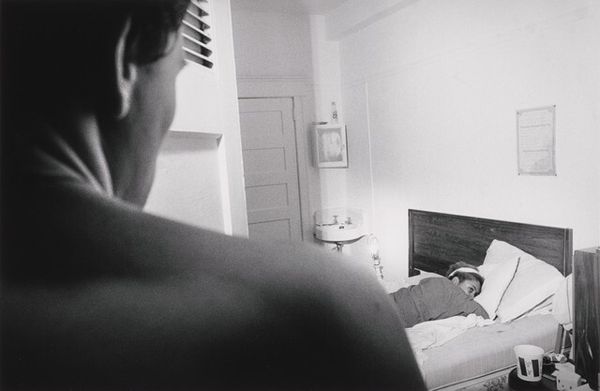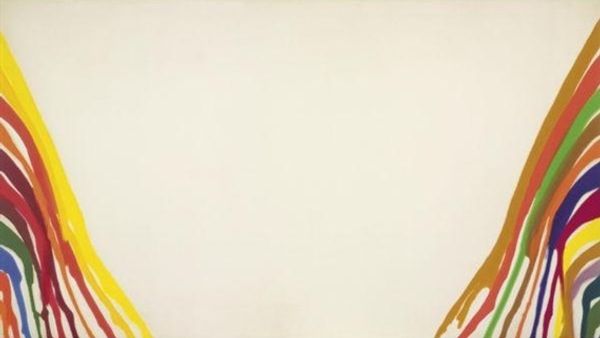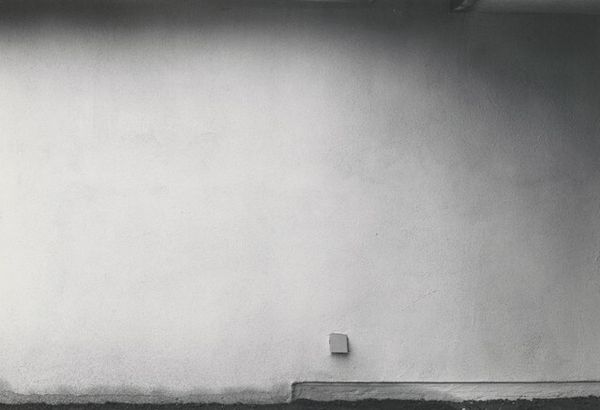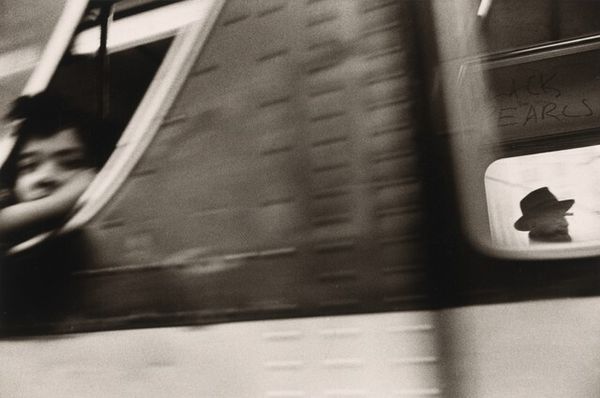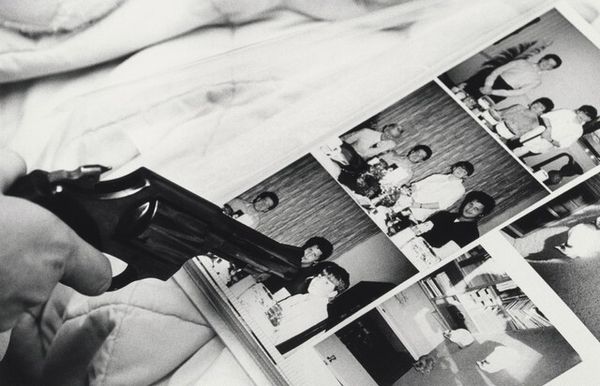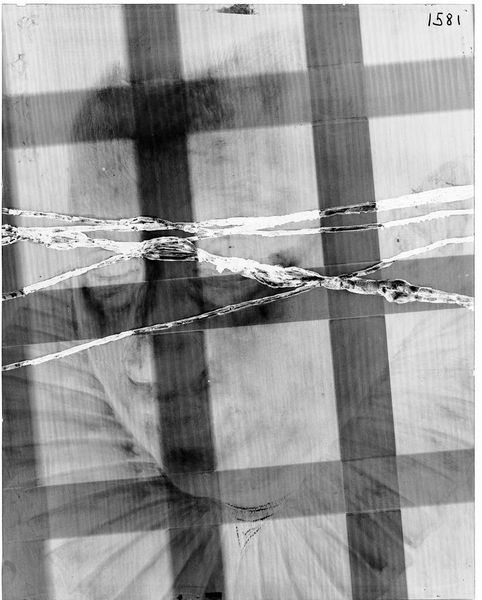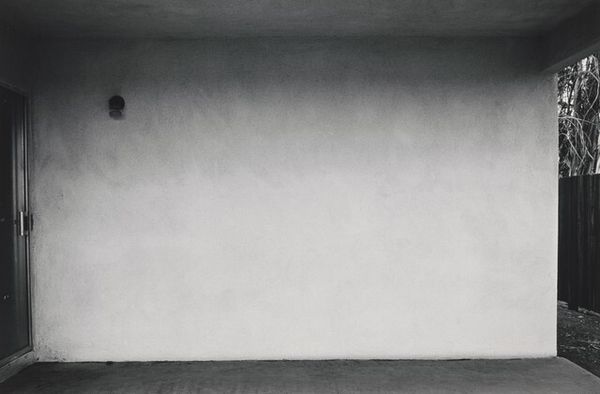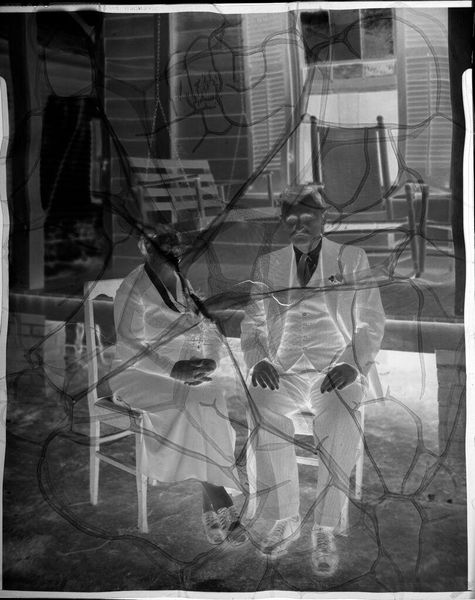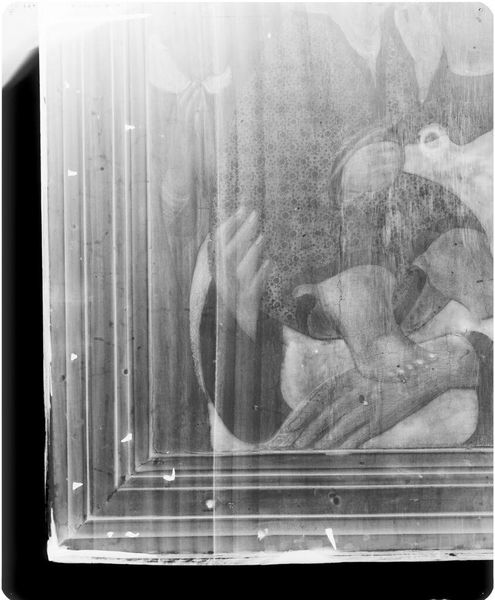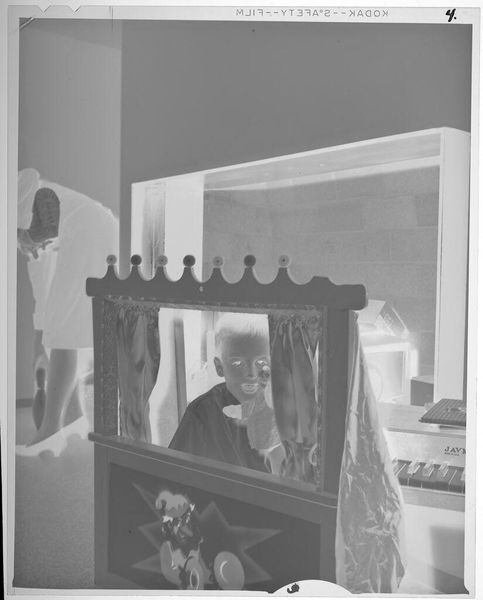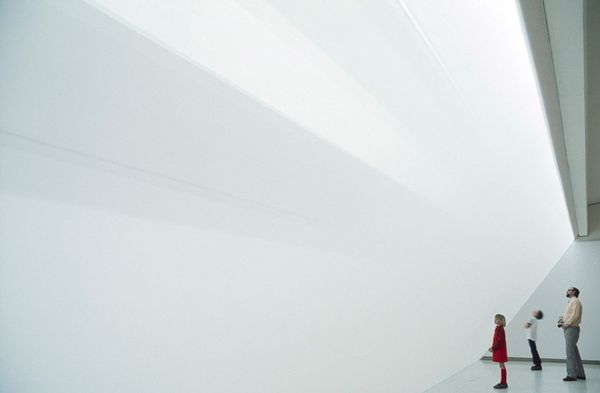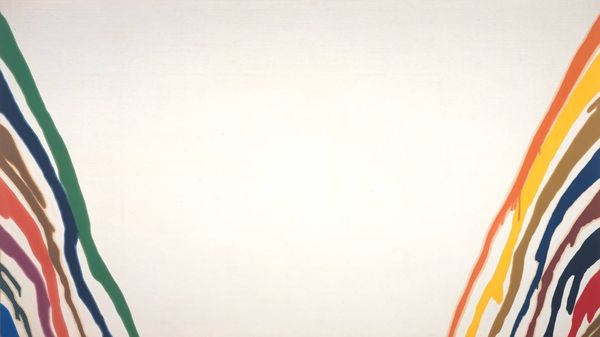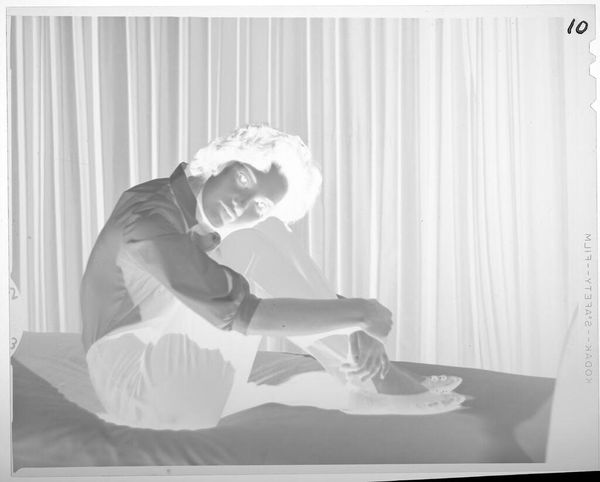
photography
#
portrait
#
contemporary
#
self-portrait
#
photography
#
photojournalism
Copyright: Creative Commons NonCommercial
Editor: This is a photograph titled "Conversation (Budapest, 1987)" by Alfred Freddy Krupa. It’s a black and white shot, a partial portrait really. What strikes me is the isolation of the figure despite the title implying a "conversation". How do you interpret this work? Curator: That perceived isolation is interesting, isn't it? Consider the date, 1987. Budapest then was still behind the Iron Curtain. The seemingly simple photograph, because of that detail, carries layers of suppressed dialogue, surveillance, and perhaps a yearning for open communication. The window, heavily veiled, could symbolize obstructed views and limited freedoms. What unspoken anxieties might be inferred here, do you think? Editor: So, you're seeing the window almost as a barrier rather than a source of light and openness? Curator: Precisely! Light is indeed present but softened, filtered. Look at the man's gaze – averted, perhaps reflective, or maybe even guarded. What does the lack of direct eye contact convey in this context? Could that averted gaze, combined with the title, also imply an internal conversation? A self-portrait delving into identity under political pressure? Editor: That’s fascinating. I was initially just reacting to the somber mood, but understanding the historical backdrop really unlocks new meanings embedded in those symbolic elements. Curator: Indeed. And this unveils the power of photojournalism to capture not just a moment but a socio-political climate etched in a face and a veiled window. Photography in this context operates as a vital carrier of cultural memory. Editor: I see that. Thank you, this perspective has really widened my understanding of the photograph. Curator: My pleasure. These images are not simply what we see; they hold what we feel, what we remember, and what we fear across time and cultures.
Comments
No comments
Be the first to comment and join the conversation on the ultimate creative platform.
